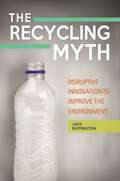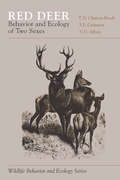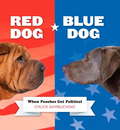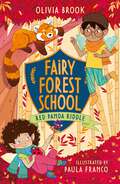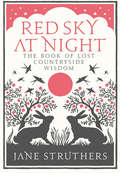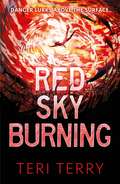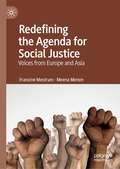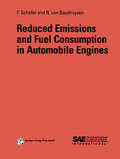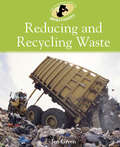- Table View
- List View
The Recycling Myth: Disruptive Innovation to Improve the Environment
by Jack BuffingtonThis book states the harsh truth: that despite best intentions, our current environmental practices are doing more harm than good, and that the solution lies in creating supply chains of the future that design, produce, consume, and reuse materials in a manner that is balanced economically and environmentally.One billion beverage containers are used on a daily basis in the United States, with at least 600 million of them ending up in landfills. Even the 400 million that are recycled—at a great cost—are not accomplishing the task of helping the environment. This economic and environmental catastrophe cannot be solved by recycling programs. From his experience as a leader in the American consumer beverage industry and a researcher in Sweden, author Jack Buffington has developed a transformational solution that seeks to not just mitigate the environmental damage but jumpstart the economy while actually achieving zero waste.The Recycling Myth tells the story of how our current environmental practices are unintentionally doing more harm than good and how we need to create a radically different supply chain of the future that must, as best as possible, copy the natural system of growth, decay, and regrowth, and discontinue a disastrous pattern of material design and use. Backed by irrefutable evidence, the book destroys our comfortable notions of the recycling status quo; explains why recycling will never work in the United States, despite decades of attempts; and introduces a new system that will actually work—without asking consumers to consume less.
Red Deer: Behavior and Ecology of Two Sexes (Wildlife Behavior and Ecology series)
by T. H. Clutton-Brock F. E. Guinness S. D. AlbonRed Deer: Behavior and Ecology of Two Sexes is the most extensive study yet available of reproduction in wild vertebrate. The authors synthesize data collected over ten years on a population of individually recognizable red deer, usually regarded as conspecific with the American elk. Their results reveal the extent of sex differences in behavior, reproduction, and ecology and make a substantial contribution to our understanding of sexual selection.
Red Dog/Blue Dog: When Pooches Get Political
by Chuck Sambuchino&“Totally worth the Milk-bones I traded for it.&” —Bo Obama&“So hilarious I peed on the rug.&” —Barney Bush Politics Goes to the Dogs Have you ever considered that man&’s best friend has political leanings just like we do? Red Dog / Blue Dog reveals that some tails wag to the left and others to the right! With 140 full-color photos of opinionated pooches accompanied by clever captions from the dogs themselves, this amusing book will add some much-needed levity to politics— whatever side of the political spectrum you are on.
Red Leviathan: The Secret History of Soviet Whaling
by Ryan Tucker JonesA revealing and authoritative history that shows how Soviet whalers secretly helped nearly destroy endangered whale populations, while also contributing to the scientific understanding necessary for these creatures’ salvation. The Soviet Union killed over six hundred thousand whales in the twentieth century, many of them illegally and secretly. That catch helped bring many whale species to near extinction by the 1970s, and the impacts of this loss of life still ripple through today’s oceans. In this new account, based on formerly secret Soviet archives and interviews with ex-whalers, environmental historian Ryan Tucker Jones offers a complete history of the role the Soviet Union played in the whales’ destruction. As other countries—especially the United States, Great Britain, Japan, and Norway—expanded their pursuit of whales to all corners of the globe, Stalin determined that the Soviet Union needed to join the hunt. What followed was a spectacularly prodigious, and often wasteful, destruction of humpback, fin, sei, right, and sperm whales in the Antarctic and the North Pacific, done in knowing violation of the International Whaling Commission’s rules. Cold War intrigue encouraged this destruction, but, as Jones shows, there is a more complex history behind this tragic Soviet experiment. Jones compellingly describes the ultimate scientific irony: today’s cetacean studies benefited from Soviet whaling, as Russian scientists on whaling vessels made key breakthroughs in understanding whale natural history and behavior. And in a final twist, Red Leviathan reveals how the Soviet public began turning against their own country’s whaling industry, working in parallel with Western environmental organizations like Greenpeace to help end industrial whaling—not long before the world’s whales might have disappeared altogether.
Red Leviathan: The Secret History of Soviet Whaling
by Ryan Tucker JonesA revealing and authoritative history that shows how Soviet whalers secretly helped nearly destroy endangered whale populations, while also contributing to the scientific understanding necessary for these creatures’ salvation. The Soviet Union killed over six hundred thousand whales in the twentieth century, many of them illegally and secretly. That catch helped bring many whale species to near extinction by the 1970s, and the impacts of this loss of life still ripple through today’s oceans. In this new account, based on formerly secret Soviet archives and interviews with ex-whalers, environmental historian Ryan Tucker Jones offers a complete history of the role the Soviet Union played in the whales’ destruction. As other countries—especially the United States, Great Britain, Japan, and Norway—expanded their pursuit of whales to all corners of the globe, Stalin determined that the Soviet Union needed to join the hunt. What followed was a spectacularly prodigious, and often wasteful, destruction of humpback, fin, sei, right, and sperm whales in the Antarctic and the North Pacific, done in knowing violation of the International Whaling Commission’s rules. Cold War intrigue encouraged this destruction, but, as Jones shows, there is a more complex history behind this tragic Soviet experiment. Jones compellingly describes the ultimate scientific irony: today’s cetacean studies benefited from Soviet whaling, as Russian scientists on whaling vessels made key breakthroughs in understanding whale natural history and behavior. And in a final twist, Red Leviathan reveals how the Soviet public began turning against their own country’s whaling industry, working in parallel with Western environmental organizations like Greenpeace to help end industrial whaling—not long before the world’s whales might have disappeared altogether.
Red Panda Riddle: Book 5 (Fairy Forest School #5)
by Olivia BrookA magical fairy school series about helping animals and looking after nature, from the publisher of the best-selling series, Rainbow Magic!It's autumn at Oakwings Academy, the magical school for Forest Fairies, and Poppy Merrymoss is learning how to make plants grow. Just as she's getting the hang of it, mean Lady Nightshade appears and puts a curse on the forest, covering it in a choking knot weed that stops plants growing. Poppy and her friends rush to clear the weeds and discover a lost red panda trapped beneath them. They need to help the baby panda get home but he's talking in riddles and they can't understand anything he says! Can they solve the riddles in time to get him home and save the rest of the forest from Lady Nightshade's curse?Have you read Poppy Merrymoss's other adventures, Fairy Forest School: The Raindrop Spell, Fairy Forest School: Baby Bunny Magic, Fairy Forest School: The Snowflake Charm and Fairy Forest School: Red Panda Riddle?
Red Sanders: Silviculture and Conservation
by T. Pullaiah S. Balasubramanya M. AnuradhaPterocarpus santalinus L.f., popularly known as Red Sanders, an endemic tree, belonging to the family Fabaceae is confined to the southern parts of Eastern Ghats. IUCN has listed this tree as endangered. The plant has superlative characteristics in its wood and has many medicinal properties. This plant has attracted the attention of both foresters and lay man because of its high valued wood which is being illegally harvested creating law and order problem. This book is a comprehensive monograph on Red Sanders and is divided into 15 chapters. The book provides information on taxonomy, morphology, distribution, wood anatomy, wood properties and uses, dye principle, phytochemistry, pharmacology, Silvicultural aspects, propagation, cultivation practices, reproductive biology, pests and diseases, biotechnology, molecular studies, conservation, trade, commerce, socioeconomic aspects of Red Sanders, and grey areas of research. The book is profusely illustrated with colour photographs and line drawings. Relevant references have been provided under each chapter. This monograph on Red Sanders with systematic representation of information and illustrations will be a desk reference and field guide to foresters, botanists, researchers, farmers, traders and environmentalists.
Red Sky at Night: The Book of Lost Country Wisdom
by Jane StruthersEver wondered how to predict the weather just by looking at the sky? Or wanted to attract butterflies to your garden? Is there a knack to building the perfect bonfire?And how exactly do you race a ferret?In this world of traffic tailbacks, supermarket shopping and 24-hour internet access, it's easy to feel disconnected from the beauty and rhythms of the natural world. If you have ever gazed in awe at stars in the night's sky, tried to catch a perfect snowflake or longed for the comfort of a roaring log fire, then this is the book for you. From spotting Britain's five kinds of owl to gardening by the phases of the moon, and from curing a cold to brewing your own ale, Red Sky at Night is packed with instructions and lists, ancient customs and old wives tales, making it an indispensable guide to countryside lore.
Red Sky Burning
by Teri TerryWhere do you run when there's no one left to trust? The stunning follow up to DARK BLUE RISING, the new thriller trilogy from Teri Terry.She survived the hurricane and now Tabby is on the run, hoping she can make it to her old friend Jago before her pursuers catch her. All she has are questions, about the experiments she saw in the basement of her swim school...about who - or what -she is.Denzi is also searching for answers after the storm. But each time he connects with a survivor, they disappear.The environmental activist group The Circle claims responsibility for the hurricane that destroyed Tabby and Denzi's school and caused great damage around the world. Now they threaten further terror if their demands aren't met. As the political tension bubbles over into violence, Tabby and Denzi search for the truth. There's something connecting them, drawing their paths into one. Can they put the puzzle pieces together and discover what The Circle wants with them? Sometimes it's better not to know the truth...
Red Snapper Biology in a Changing World (CRC Marine Biology Series)
by Stephen T. Szedlmayer Stephen A. BortoneRed Snapper Lutjanus campechanus, is an important commercial and recreational fish species and there has been much interest in maintaining its status among a variety of scientific, social and economic levels. Stocks are influenced by varying environmental conditions, changing fishing effort and efficiency, anthropogenic effects, inter- and intraspecific interactions, bycatch from other fisheries, and habitat alterations. Red Snapper Biology in a Changing World explores these changing factors and their potential effects on Red Snapper in the Eastern Atlantic region including the Gulf of Mexico and Southeastern U.S. The book will provide a better understanding of Red Snapper population fluctuations that will subsequently allow for better management decisions and more informed user groups in their efforts to maintain a sustainable fishery. It explores the responses Red Snapper have made, and are making, relative to their life history attributes such as early life history and adult ecology, especially attributes associated with population distribution and abundance, movement patterns, fish health issues and management success. A compendium of many papers presented at the 147th annual meeting of the American Fisheries Society in Tampa, Florida, this volume also includes additional research completed as a result of the symposium. It will be essential reading for fisheries scientists and managers, ichthyologists, resource and environmental managers, and policymakers who are involved with coastal fisheries.
Red Snapper Biology in a Changing World (CRC Marine Biology Series)
by Stephen T. Szedlmayer Stephen A. BortoneRed Snapper Lutjanus campechanus, is an important commercial and recreational fish species and there has been much interest in maintaining its status among a variety of scientific, social and economic levels. Stocks are influenced by varying environmental conditions, changing fishing effort and efficiency, anthropogenic effects, inter- and intraspecific interactions, bycatch from other fisheries, and habitat alterations. Red Snapper Biology in a Changing World explores these changing factors and their potential effects on Red Snapper in the Eastern Atlantic region including the Gulf of Mexico and Southeastern U.S. The book will provide a better understanding of Red Snapper population fluctuations that will subsequently allow for better management decisions and more informed user groups in their efforts to maintain a sustainable fishery. It explores the responses Red Snapper have made, and are making, relative to their life history attributes such as early life history and adult ecology, especially attributes associated with population distribution and abundance, movement patterns, fish health issues and management success. A compendium of many papers presented at the 147th annual meeting of the American Fisheries Society in Tampa, Florida, this volume also includes additional research completed as a result of the symposium. It will be essential reading for fisheries scientists and managers, ichthyologists, resource and environmental managers, and policymakers who are involved with coastal fisheries.
The Red Soils of China: Their Nature, Management and Utilization
by XiaoeYang ZhenliHe M. J. WilsonThe red soils of China are typical in their chemical, physical and mineralogical characteristics of red soils in other tropical and sub-tropical areas of the world, particularly in South America, Africa and south-east Asia. For the most part, these soils are highly weathered and inherently infertile. They are acidic, nutrient deficient, poor in organic matter and have a low water-holding and supplying capacity. They cannot sustain arable cropping systems without the most careful management and are highly susceptible to soil erosion, particularly on sloping land. It is the purpose of this book to present recent research showing how the problems associated with using the red soils in China for sustainable agricultural production can be overcome, using a variety of traditional and novel approaches. In principle, these approaches should be useful in other tropical and sub-tropical countries faced with the problem of making the best use of their fragile red soil resources. The term "in principle" is used deliberately because, of course, the different red soil countries invariably operate within dissimilar socio-economic frameworks. At the present time, China may be considered to be in the process of an "industrial revolution", rather like that that took place in Britain in the late eighteenth and early nineteenth centuries.
Redeeming REDD: Policies, Incentives and Social Feasibility for Avoided Deforestation
by Michael I. BrownIt is now well accepted that deforestation is a key source of greenhouse gas emissions and of climate change, with forests representing major sinks for carbon. As a result, public and private initiatives for reducing emissions from deforestation and forest degradation (REDD) have been widely endorsed by policy-makers. A key issue is the feasibility of carbon trading or other incentives to encourage land-owners and indigenous people, particularly in developing tropical countries, to conserve forests, rather than to cut them down for agricultural or other development purposes. This book presents a major critique of the aims and policies of REDD as currently structured, particularly in terms of their social feasibility. It is shown how the claims to be able to reduce greenhouse gas emissions as well as enhance people's livelihoods and biodiversity conservation are unrealistic. There is a naive assumption that technical or economic fixes are sufficient for success. However, the social and governance aspects of REDD, and its enhanced version known as REDD+, are shown to be implausible. Instead to enhance REDD's prospects, the author provides a roadmap for developing a new social contract that puts people first.
Redeeming REDD: Policies, Incentives and Social Feasibility for Avoided Deforestation
by Michael I. BrownIt is now well accepted that deforestation is a key source of greenhouse gas emissions and of climate change, with forests representing major sinks for carbon. As a result, public and private initiatives for reducing emissions from deforestation and forest degradation (REDD) have been widely endorsed by policy-makers. A key issue is the feasibility of carbon trading or other incentives to encourage land-owners and indigenous people, particularly in developing tropical countries, to conserve forests, rather than to cut them down for agricultural or other development purposes. This book presents a major critique of the aims and policies of REDD as currently structured, particularly in terms of their social feasibility. It is shown how the claims to be able to reduce greenhouse gas emissions as well as enhance people's livelihoods and biodiversity conservation are unrealistic. There is a naive assumption that technical or economic fixes are sufficient for success. However, the social and governance aspects of REDD, and its enhanced version known as REDD+, are shown to be implausible. Instead to enhance REDD's prospects, the author provides a roadmap for developing a new social contract that puts people first.
Redefining Nature: Ecology, Culture and Domestication
by Roy EllenHow can anthropology improve our understanding of the interrelationship between nature and culture?- What can anthropology contribute to practical debates which depend on particular definitions of nature, such as that concerning sustainable development?Humankind has evolved over several million years by living in and utilizing 'nature' and by assimilating it into 'culture'. Indeed, the technological and cultural advancement of the species has been widely acknowledged to rest upon human domination and control of nature. Yet, by the 1960s, the idea of culture in confrontation with nature was being challenged by science, philosophy and the environmental movement. Anthropology is increasingly concerned with such issues as they become more urgent for humankind as a whole. This important book reviews the current state of the concepts of 'nature' we use, both as scientific devices and ideological constructs, and is organised around three themes:- nature as a cultural construction;- the cultural management of the environment; and- relations between plants, animals and humans.
Redefining Nature: Ecology, Culture and Domestication
by Roy Ellen Katsuyoshi FukuiHow can anthropology improve our understanding of the interrelationship between nature and culture?- What can anthropology contribute to practical debates which depend on particular definitions of nature, such as that concerning sustainable development?Humankind has evolved over several million years by living in and utilizing 'nature' and by assimilating it into 'culture'. Indeed, the technological and cultural advancement of the species has been widely acknowledged to rest upon human domination and control of nature. Yet, by the 1960s, the idea of culture in confrontation with nature was being challenged by science, philosophy and the environmental movement. Anthropology is increasingly concerned with such issues as they become more urgent for humankind as a whole. This important book reviews the current state of the concepts of 'nature' we use, both as scientific devices and ideological constructs, and is organised around three themes:- nature as a cultural construction;- the cultural management of the environment; and- relations between plants, animals and humans.
Redefining the Agenda for Social Justice: Voices from Europe and Asia
by Francine Mestrum Meena MenonThe book relates three years of history of social movements from Asia and Europe who work on social justice, as a rough overview. The work for the book is mainly done on the ground, day after day, working in villages and cities, with people and their organisations, organising resistance and preparing alternatives. It is based on the fact that European and Asian concerns are identical, in spite of divergent levels of development and wealth, and that the existing international initiatives, such as the ILO’s social protection floors, or the UN’s Sustainable Development Goals are perfectly compatible with neoliberal policies.The book goes beyond and sees social commons as a strategic tool for transforming societies. It is basically a project for the sustainability of life, of humans, of societies, and of nature. The book describes the ideas at the basis of the work in different sectors. It is not about the practice of social policies but about the ideas and discourses that can in the end shape the political practices. In sum, this book, presents a new social paradigm. It concretely shows how social justice and environmental justice do go hand in hand.
Rediscovering the Great Plains: Journeys by Dog, Canoe, and Horse (Creating the North American Landscape)
by Norman Scott HendersonThe North American Plains are one of the world's great landscapes—perhaps the signature landscape of the continent. Today, the most intimate experience most of us have of the great grasslands is from behind the window of a car or train. It was not always so. In the earliest days, Plains Indians traveled on foot across the vastness, with only the fierce, wolflike Plains dogs as companions. Later, with the arrival of the Europeans, horses and canoes appeared on the Plains. In Rediscovering the Great Plains, Norman Henderson, a leading scholar of the world's great temperate grasslands, revives these traditional modes of travel, journeying along 200 miles of Canada's Qu'Appelle River valley by dog and travois (the wooden rack pulled by dogs and horses used by Native Americans to transport goods), then by canoe, and finally by horse and travois.Henderson interweaves his own adventures with the exploits of earlier Plains travelers, like Lewis and Clark, Francisco Coronado, La Vérendrye, and Alexander Henry. Lesser-known experiences of the fur traders and others who struggled to cross this strange and forbidding landscape also illuminate the story, while Henderson's often humorous description of his attempts to find and train old Plains breeds of dogs and horses highlight the difficulties involved in recreating archaic travel methods. He also draws on the history of the world's other great temperate grasslands: the South American pampas and the Eurasian steppes. Recalling the work of Ian Frazier and Jonathan Raban, Henderson's captivating account of his three journeys of exploration will foster a better appreciation for, and deeper understanding of, the natural and human history of the North American Plains.
Redox: Fundamentals, Processes and Applications
by Wilhelmus H. M.Duijnisveld JürgenBöttcher Walter R. Fischer Horst D. Schulz JoachimSchüringFew processes are as important for environmental geochemistry as the interplay between the oxidation and reduction of dissolved and solid species. The knowledge of the redox conditions is most important to predict the geochemical behaviour of a great number of components, the mobilities of which are directly or indirectly controlled by redox processes. The understanding of the chemical mechanisms responsible for the establishment of measurable potentials is the major key for the evaluation and sensitive interpretation of data. This book is suitable for advanced undergraduates as well as for all scientists dealing with the measurement and interpretation of redox conditions in the natural environment.
Reduce, Reuse, Recycle: Reduce Reuse Recycle (Go Green #3)
by Helen Lanz'Go Green: Reduce, Reuse, Recycle' looks at the ever-growing problem of global waste and advises how we can all take action to cut down what we throw away by reducing what we buy, reusing everything that we can, and recycling everything else.Packed with statistics, useful information and handy tips, each title in the tells us what steps we can all take to `go green`.
Reduced Emissions and Fuel Consumption in Automobile Engines
by Fred Schäfer Richard van BasshuysenOver the last several years, there has been much discussion on the interrelation of CO2 emissions with the global warming phenomenon. This in turn has increased pressure to develop and produce more fuel efficient engines and vehicles. This is the central topic of this book. It covers the underlying processes which cause pollutant emissions and the possibilities of reducing them, as well as the fuel consumption of gasoline and diesel engines, including direct injection diesel engines. As well as the engine-related causes of pollution, which is found in the raw exhaust, there is also a description of systems and methods for exhaust post treatment. The significant influence of fuels and lubricants (both conventional and alternative fuels) on emission behavior is also covered. In addition to the conventional gasoline and diesel engines, lean-burn and direct injection gasoline engines and two-stroke gasoline and diesel engines are included. The potential for reducing fuel consumption and pollution is described as well as the related reduction of CO2 emissions. Finally, a detailed summary of the most important laws and regulations pertaining to pollutant emissions and consumption limits is presented. This book is intended for practising engineers involved in research and applied sciences as well as for interested engineering students.
Reducing and Recycling Waste: Reducing And Recycling Waste (libr (Environment Detective Investigates #4)
by Jen GreenWhat exactly is waste?Why is waste a problem?How can we reduce, reuse and recycle waste?The Environment Detective Investigates helps you to answer these questions and many more about waste. Find out what happens to waste, who produces it and how it causes pollution.
Reducing Climate Impacts in the Transportation Sector
by Daniel Sperling James S. CannonMore than 250 experts from around the world gathered at the Asilomar Transportation and Energy Conference in August 2007 to tackle what many agree is the greatest environmental challenge the world faces: climate change. This 11th Biennial Conference, organized under the auspices of the Energy and Alternative Fuels Committees of the U.S. Transportation Research Board, examined key climate change policy issues and strategies to combat climate impacts from the transportation sector, a leading source of greenhouse gas emissions. This book includes chapters by leading presenters at the Asilomar Conference that reflect the most current views of the world’s experts about a critical and rapidly evolving energy and environmental problem. The chapters in this book examine increasing worldwide emissions of greenhouse gases, uncertain oil supply, evolving climate change science, public attitudes toward climate change, and the implications for the U.S. of growth in China, India and elsewhere. They propose methods to reduce growth in vehicle travel through alternative fuel, new technologies, and land use planning. They examine the costs and the potential for greenhouse gas reduction through deployment of advanced technology and alternative fuels and propose strategies to motivate consumers to buy fuel efficient and alternative fuel vehicles, including heavy duty trucks.
Reducing Greenhouse Gas Emissions and Improving Air Quality: Two Interrelated Global Challenges
by Larry E. Erickson Gary BraseThe world’s atmosphere is a common resource. Air quality, along with energy, transportation, and climate change have significant impacts on our lives and this book helps readers understand the changes happening at the nexus of these areas, as they relate to reducing greenhouse gas emissions and improving air quality. Discussing the transitions to electric vehicles, solar and wind energy for electricity generation, battery developments, smart grids and electric power management, and progress in the electrification of agricultural technology, it also provides the latest information in the context of the United Nations sustainable development goals and the Paris Agreement on Climate Change. Features: Includes content on how to improve urban air quality in large cities and urban environments. Effectively addresses the nexus of energy, transportation, air quality, climate change and health. Discusses innovative concepts at the nexus of renewable energy, smart grid, electric vehicles, and electric power management. Describes recent progress in meeting the goals of the Paris Agreement on Climate Change and the benefits of reducing greenhouse gas emissions. Written for a wide audience by world experts in sustainability. Reducing Greenhouse Gas Emission and Improving Air Quality: Two Interrelated Global Challenges, is an invaluable book for professionals and academics at the center of changes relating to solar and wind energy, electric vehicles, and charging infrastructure, including government officials, community leaders, researchers, students, and interested citizens. It is also an excellent text for classes that address sustainability, particularly for those focused on transportation and energy.
Reducing Greenhouse Gas Emissions and Improving Air Quality: Two Interrelated Global Challenges
by Larry E. Erickson Gary BraseThe world’s atmosphere is a common resource. Air quality, along with energy, transportation, and climate change have significant impacts on our lives and this book helps readers understand the changes happening at the nexus of these areas, as they relate to reducing greenhouse gas emissions and improving air quality. Discussing the transitions to electric vehicles, solar and wind energy for electricity generation, battery developments, smart grids and electric power management, and progress in the electrification of agricultural technology, it also provides the latest information in the context of the United Nations sustainable development goals and the Paris Agreement on Climate Change. Features: Includes content on how to improve urban air quality in large cities and urban environments. Effectively addresses the nexus of energy, transportation, air quality, climate change and health. Discusses innovative concepts at the nexus of renewable energy, smart grid, electric vehicles, and electric power management. Describes recent progress in meeting the goals of the Paris Agreement on Climate Change and the benefits of reducing greenhouse gas emissions. Written for a wide audience by world experts in sustainability. Reducing Greenhouse Gas Emission and Improving Air Quality: Two Interrelated Global Challenges, is an invaluable book for professionals and academics at the center of changes relating to solar and wind energy, electric vehicles, and charging infrastructure, including government officials, community leaders, researchers, students, and interested citizens. It is also an excellent text for classes that address sustainability, particularly for those focused on transportation and energy.
